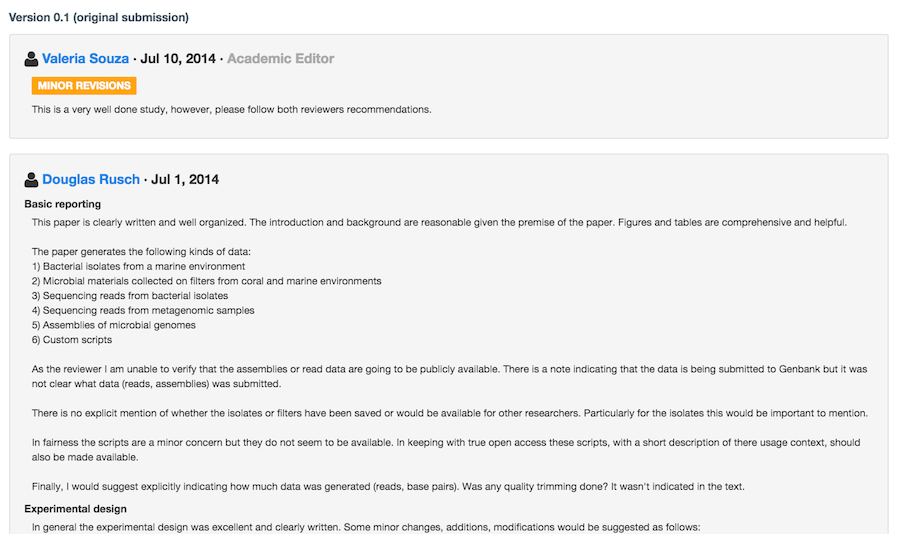PeerJ = Open
Post-publication peer review history
PeerJ's editorial model is based on post-publication peer review history transparency. All reviews of published articles are made public. This includes manuscript files, peer review comments, author rebuttals and revised materials. Note: For submissions created before 12 February 2023, authors were able to opt-opt of publishing their peer review history.
What is meant by "optional?"
In this instance "optional" means that peer review is still done as single-blind (editors/reviewers see the names of authors), however once a manuscript has been accepted then reviewers have the option to sign their reviews. All reviews of published articles are made public, whether they are signed or not.
At no point is the reviewer's identity made public until a manuscript has been published and permission has been granted by the reviewer.
Does PeerJ have pre-publication open review?
No. We operate a traditional "single-blind" process to start. Manuscripts sent to PeerJ or PeerJ Computer Science are only reviewed privately. However, it is "Open" in the sense that reviewers can sign their reviews, and All reviews of published articles are made public.
Why not perform double blind reviews? First, true double blind reviewing may be impossible to achieve, and so we don't want to promise anything that cannot be guaranteed.
Review History
A dedicated page displays a publication's review history containing peer review comments, author rebuttals and revised materials. Each round of review has a separate "version" section, such that others are able to trace the publication's changes all the way back to the original submission.
Below is the partial review history from an actual publication in PeerJ, which shows the Editor in charge, Valeria Souza, and Reviewer 1's Douglas Rusch's comments.

Dr. Rusch gets traceable, long-term persistent credit (thanks to a DOI coined per review) any time someone chooses to cite his reviewer report. To help citing we add an info box on how to cite a review below each public review. For the review above this looks like the following:
How to Perform Peer-Review
Public reviews serve as an excellent resource for learning how to perform a review. There are of course many ways to do a review (both good and bad). A positive side effect of signing reviews and having the history available is that all scholars now have an opportunity to learn and improve upon future reviews themselves.
A suggested format for a good review is to comment on three dimensions:
- Was the report well structured and written (i.e. the basic reporting)?
- Were the methods and materials appropriate and performed correctly?
- Do the results and conclusions match the experiments (i.e. is it valid)?
We can also see from the example above that Dr. Rusch has been thorough, explicit (cites page numbers), and critical, but civil. Additionally he has written a short one line summary at the top of each reporting section. This is a report that a submitting author could easily follow and make corrections with.
Now that we've covered peer-review you may be interested to learn more about how to write a good response letter that could reduce the time it takes to publish.
